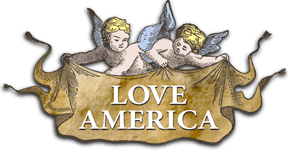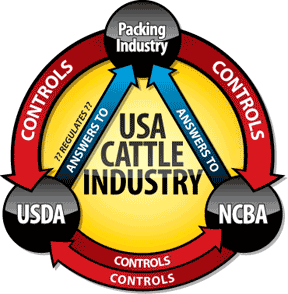


by Karin Bergener, Judith McGeary & Randy Givens
Many questions have been raised about the costs of NAIS. USDA has been asked for a cost-benefit analysis, but hasn’t provided it.
The User Guide is correct that premises registration is currently free in all states. USDA admits, however, on page 26 that the states “may choose to keep premises registration free or not.”
The Texas Animal Health Commission proposed charging a fee for mandatory premises registration to fund the agency’s activities. Michigan State Department of Agriculture has stated that its mandatory RFID tagging of cattle is at “minimal” cost to owners “as long as federal funding continues.” What happens when the federal funding ends? The USDA and state agencies continue to avoid the real issue, which is how much the NAIS program truly costs in its entirety.
The estimated cost data in the User Guide is spurious and underestimated. According to USDA, “horse owners are paying $20 to have a horse implanted with injectable transponders. If the owner has the expertise to implant the transponder him/herself, the cost of the transponder would be a few dollars.” Even for those implanting the chips themselves, just the microchip and syringe costs around $18 (netposse.com). With a vet’s assistance, the cost may be anywhere from $35 to $70. Those quotes do not include the cost of hauling the horse to the vet or paying a barn-visit fee.
USDA also fails to include the costs of RFID readers, computers, or other means required for reporting to the NAIS database, and the untold hours of labor involved with tagging animals, record keeping, and reporting. Estimates from the Australian Beef Association place the total cost of tagging at $37 to $40 per animal on average. Since people who own one or a few animals don’t buy supplies in large enough quantities to qualify for the discounts enjoyed by large producers, these averages understate the probable cost for most of us.
USDA repeatedly says that competition in the market will keep reporting fees down for animal owners. The User Guide does not, however, say how these costs will be controlled or minimized. All we have are the hopes of USDA employees that NAIS will have only minimal cost impacts on animal owners.
Moreover, entities that stand to profit from running the databases have played key roles in developing the program. Experience with many areas of our economy proves that the bureaucrats’ hopes that costs will stay low are not justified, especially when private industry is actively involved in setting government policy.
USDA admits that “...no specific participation cost figures are available at this time.” So its hopeful message about costs is not based on facts.
Karin Bergener is an attorney in Freedom, Ohio. Judith McGeary is an attorney in Austin, Texas. Randy Givens of Paige, Texas, is a retired Army colonel. All three are livestock owners and cofounders of Liberty Ark Coalition established to defeat NAIS. Their article appeared in the Winter 2007 issue of Rural Heritage.
The following is in response to my asking an investigative reporter to
clarify facts regarding NCBA & Packers. Roni Bell Sylvester

Re: Your question about the NCBA board. NCBA likes to tout that a majority of its board is made up of cow/calf and stocker operators. Here are the facts. Seats on the NCBA board must be purchased. You can visit the NCBA website to find out the current pricing for board seats, but if I remember correctly the base price for the first seat is $10,000. Additional seats are much higher.
States like Kansas, Iowa, Texas, Nebraska and California - where cattle feeding is concentrated - collect involuntary dues from people who feed in NCBA affiliated feedlots. The dues are simply collected on yardage invoices. Therefore, these states have far more money than other states like the northern plains where cattle feeding is not concentrated. NCBA affiliates in those states purchase multiple seats on the board. Texas Cattle Feeders, Kansas Livestock Association, Nebraska Cattlemen, Iowa Cattlemen, California Cattlemen collectively hold enough votes on the NCBA board to control policy. Other states simply do not have the money to spend buying enough voting seats to effect policy.
The packers do NOT need to have a majority of seats on the NCBA board in order to control things and they don't. They simply show up at the meeting, parade down the aisle and sit in the front of the room, turn their chairs around and stare at those feeding states and guess what? The feeding states vote as dictated when the vice presidents of major packer's cattle procurement divisions are watching.
The NCBA board is divided into two divisions - policy and federation. We used to call it dues and checkoff. What I just referred to in the paragraphs above is the dues side, which sets policy. The federation (or checkoff) division is structured the same way, meaning that votes are purchased on the federation side of the NCBA board. States use checkoff funds to purchase those voting seats. Again, the feeding states have control because that's where the most cattle transactions take place, putting the money (and control) into their hands.
A number of times over the years there's been movements to attempt to change the structure at NCBA and all have failed. It's simply impossible to out vote those in control. Texas Cattle Feeders Association, for example, sinks hundreds upon hundreds of thousands of dollars each year into seats on both sides of the NCBA board. So does KLA. Collectively all the other member states don't have enough votes to out vote them. Colorado Cattlemen's Association I believe holds three voting seats currently compared to TCFA's 19 or 20 - just on the dues side.
"Farm Bureau and Cattlemen will wind up with money in their coffers out of NAIS... and it has nothing to do with disease.
As an individual put it right when they said, "NAIS is Market Driven - Mark-it or you can't sell it."
NAIS is merely an inventory of your collateral assets - which they don't really consider are yours - you are just the laborer taking care of them."
Writer requests to remain unknown.